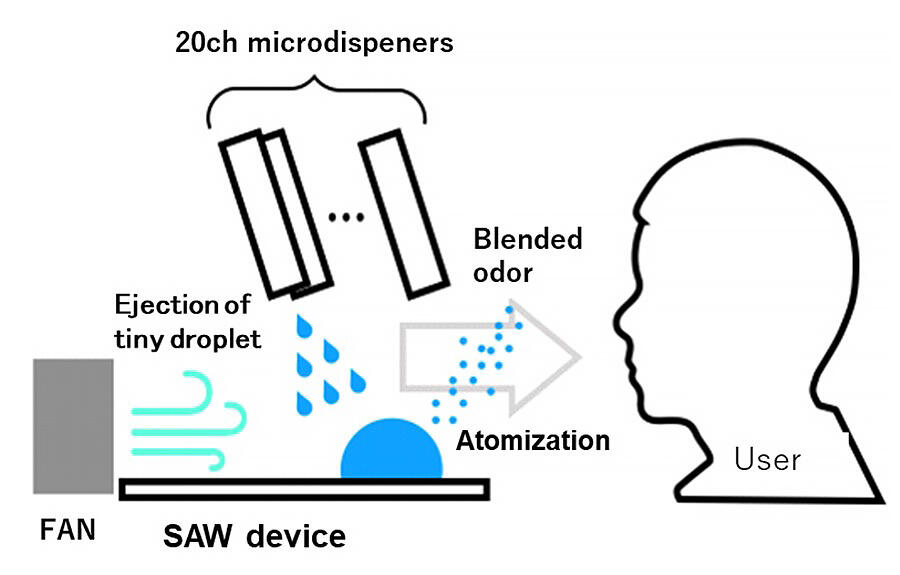
(Provided by Tokyo Institute of Technology)
A research group comprised of Professor Takamichi Nakamoto of the Institute of Innovative Research (IIR), Tokyo Institute of Technology, and graduate student Masaaki Iseki of the Department of Computational Intelligence and Systems Science of the same university, has successfully developed a technology that can recreate a diverse range of fragrances by producing "odor components," through the analysis of numerous odors to identify and select multiple basic components, and blend them.
To date, the research group has already been working on the fabrication of odor components while carrying out research on olfactory displays, but this was the first time they combined both technologies to reproduce smells using an olfactory display with odor components installed.
In order to analyze the target smells for reproduction, and to select the odor components, the group analyzed 185 different essential oils using a mass spectrometer and measured their mass spectra. The group then extracted 20 base vectors using the Nonnegative Matrix Factorization (NMF) method, determined the base component smell associated with each base vector, and combined the 185 essential oils that had been subject to mass spectrometer analysis, to produce the odor components which could be used to recreate many other smells, much like the fundamental colors of red, green, and blue that can be mixed to recreate any other color.
Various fragrances were then reproduced by using the olfactory display to spray and mix mists of the odor components. The group was able to reproduce the smells of seven leading essential oils using the olfactory display, including lemon, palmarosa, carrot seed, elemi, lavender, chypre, and mentha arvensis. Finally, the group carried out a sensory test to compare the reproduced odors (approximate odors) to the original odors (target odors) using a triangle difference test.
The results found no significant difference (with 5% representing significance) between the approximate and target odors for all seven essential oils. These results demonstrated that the olfactory display was capable of reproducing odors by mixing the odor components.
According to Professor Nakamoto, "In the future, olfactory displays will be able to mix and reproduce diverse odors at the command of a computer using premade odor libraries, and devices will be applied to areas such as entertainment, games, animation, film, online shopping, advertising, event production, nursing, and medical treatment. We also hope to make remote smell production possible using smartphones or PCs."
■ Essential oil: a type of fragrant oil extracted from the aromatic components of plant matter, such as leaves, roots, and fruit. These oils are commonly used in various ways such as aromatherapy.
■ Nonnegative Matrix Factorization (NMF) method: A method used to factorize a data matrix into multiple base matrices, comprised of base vectors, and a coefficient matrix consisting of the coefficients for each base vector.
This article has been translated by JST with permission from The Science News Ltd.(https://sci-news.co.jp/). Unauthorized reproduction of the article and photographs is prohibited.




